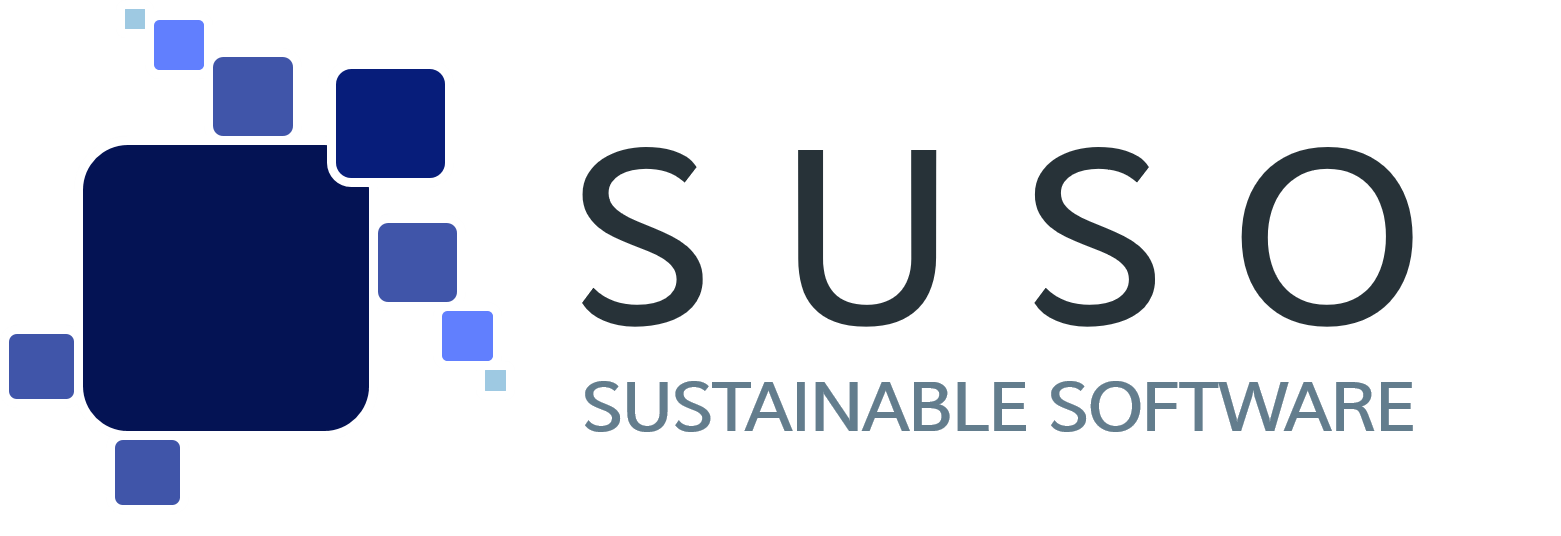Sustainable software architecture: How can software architectures be designed to promote energy efficiency?
Software, of course, requires energy and resources that are generated in the production of computing power and by hardware. However, software developers can help reduce the environmental footprint of their work by designing sustainable software architectures. A sustainable software architecture is energy-efficient and environmentally friendly and can thus help minimize the impact of software on the environment.
What is sustainable software architecture?
A sustainable software architecture primarily takes energy efficiency into account. It focuses on the ecological impact of software development and ensures that the software contributes as little as possible to CO2 emissions. Various approaches and techniques are used for this purpose, such as the use of efficient algorithms, the reduction of computing and storage resources, and the reuse of components.
Currently, there are many developments and trends in the gaming industry that are aimed at sustainability. For example, more and more companies are focusing on renewable energy and working on more energy-efficient gaming systems and servers. The use of environmentally friendly materials and recycling of products is also gaining importance. In addition, there are also many initiatives and programs that help companies integrate sustainability into their business processes.
Use our tools for sustainable software
Our three tools help you acquire the knowledge, skills, and financial resources you need to develop sustainable software products and services that meet social, environmental, and economic needs. By using these tools, you can position yourself as a leader in sustainable software development and help create a better future for all.
Criteria for sustainable software architecture
Sustainable software architectures should meet certain criteria to have the lowest possible impact on the environment. The most important criteria include energy efficiency, resource consumption, recyclability, maintainability and scalability.
The energy efficiency of a software architecture refers to the amount of energy required to run the software. It is important that the software architecture consumes as little energy as possible to reduce both the environmental footprint and the cost. One way to reduce energy consumption is to use energy-efficient hardware components or optimize the software code. For this, we recommend our more theoretical article and more practical article on Green Coding.
Another important criterion is resource consumption. Sustainable software architectures should be as resource efficient as possible and minimize the consumption of raw materials such as metals, plastics and other materials. One way to reduce resource consumption is to use open source software that already exists and does not have to be produced separately.
The recyclability of software architectures is also an important aspect. Sustainable software architectures should be designed so that they can be reused or recycled at the end of their service life. This can be facilitated, for example, by the use of standardized interfaces and components.
Next, the maintainability of a software architecture is another important criterion. A well-maintainable architecture is easier to update and repair, which can extend the lifecycle of the software. An architecture that is easy to maintain results in fewer resources and energy being consumed to keep the software running.
Finally, the scalability of a software architecture plays an important role in sustainability. A scalable architecture allows the software to respond flexibly to changes in usage intensity or the number of users. An architecture that is scalable can help optimize energy consumption and reduce the use of resources. This is where agile software development could come in handy, by the way.
Best practices for sustainable software architecture
A sustainable software architecture can be designed using a variety of proven methods and techniques. In the following, some of these methods and techniques are presented that can contribute to the creation of an energy-efficient, maintainable and scalable software architecture.
- Architecture patterns are predefined structures that can be used to design software architectures. Some architecture patterns that can help to create sustainable software architectures include the layered model, the MVC (Model-View-Controller) pattern, or the SOA (Service-Oriented Architecture) pattern. These architecture patterns help to divide the software into small, modularized and independent units that are easier to maintain and scale.
- Cloud computing is another important tool for designing sustainable software architectures. By using cloud computing platforms such as AWS, Azure or Google Cloud, companies can distribute their software across multiple servers or data centers to ensure high availability and scalability. In addition, resources can be used more flexibly and efficiently by scaling the infrastructure to meet demand.
- Virtualization techniques allow one or more virtual machines to run on a physical server. This can help consolidate servers and optimize resource utilization by allowing multiple applications to run on one physical server.
- Microservices are small, independent, and loosely coupled services that work together to create a more complex application. By using microservices, developers can update and scale individual parts of the application faster and independently. In addition, microservices can run on different servers to distribute the load and ensure high availability.
Examples of sustainable software architectures
In the following, some examples of sustainable software architectures are presented and their strengths and weaknesses with respect to sustainability are analyzed.
Greenpeace International
Greenpeace International has developed a web application aimed at informing the public about climate change and ways in which individuals can reduce their own carbon footprint. The application was designed to be as energy efficient as possible without compromising on functionality or usability.
The application’s architecture is based on a variety of technologies and practices that help keep energy consumption to a minimum. For example, all images on the site are compressed and stored in a WebP file to reduce bandwidth requirements. In addition, the website is hosted on a server powered by renewable energy.
The strength of this architecture is that it is designed to maximize the energy efficiency of the application while maintaining the user experience. The weakness is that the technologies and practices required to create this architecture may not be available or practical in all application areas.
Global Real Estate Sustainability Benchmark (GRESB)
GRESB (Global Real Estate Sustainability Benchmark) is a company that has developed a rating system for sustainable real estate. GRESB’s platform is designed to meet energy efficiency and sustainability requirements. The platform provides property owners and managers with a tool to measure and improve their sustainability performance.
The platform’s architecture is based on cloud computing technologies and uses virtualization and containerization to optimize resource utilization. In addition, the platform is designed to run on renewable energy to minimize its carbon footprint.
The strength of this architecture is that it is built on a scalable, efficient and sustainable infrastructure. The weakness is that the use of cloud computing and virtualization may not be suitable for all application areas.
Microsoft
Microsoft has also set itself the goal of developing and implementing sustainable software architectures. One example of this is the Microsoft data center in Dublin, which is considered one of the most energy-efficient data centers in the world. By using innovative technology, such as server virtualization and intelligent cooling, energy consumption was reduced by 50%.
Another example is the “InnerEye” project, software for automated analysis of medical image data developed by Microsoft. By using cloud computing technology, resource utilization was optimized and computing time was reduced by 90%. This not only leads to savings in terms of energy and resource consumption, but also enables faster and more accurate diagnosis.
Challenges and future developments
Although there are many advantages to designing sustainable software architectures, there may also be some challenges in implementing them. One of the biggest challenges is that many requirements for modern software are very complex and may be difficult to meet without compromising sustainability.
Another obstacle may be that there are technical limitations that prevent certain sustainable architecture principles from being implemented. An example of this would be an architecture that cannot be run on virtualized servers due to performance or response time requirements.
Despite these challenges, there are many developments and trends that can help promote sustainable software architectures. One of the most important developments in this area is Green IT, which focuses on promoting energy efficiency and sustainability throughout the IT infrastructure. Green IT refers to all measures that help reduce energy consumption and the environmental footprint of the IT industry.
Another important trend is edge computing, which brings data processing closer to the end user or IoT device. This has the advantage of reducing network latency, thus reducing energy consumption. Edge computing can also help reduce the need for servers and data centers, which can also contribute to sustainability.
Conclusion
Sustainable software architecture is an important factor in promoting energy efficiency and sustainability in the IT industry. Sustainable software architecture should take into account various criteria, such as energy efficiency, resource consumption, recyclability, maintainability, and scalability. Using proven methods and techniques such as architectural patterns, cloud computing, virtualization, and microservices can help design sustainable software architectures. However, there are also some challenges in designing sustainable software architectures, such as complex requirements and technical constraints. However, future developments and trends such as Green IT and Edge Computing offer opportunities to overcome these challenges and promote sustainable software architectures.





